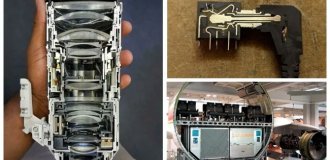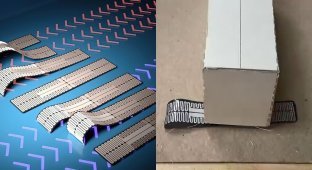Unusual water robot
EPFL engineers have unveiled an original aquatic robot. It moves like a marine planarian.
The tiny device, weighing only 6 grams, swims without a single propeller or motor, making it ideal for studying aquatic ecosystems.
The secret of its movement lies in two soft rubber membranes 6 mm thick, which act as pectoral fins. Each membrane is connected to an electrohydraulic drive that creates waves. The control system supplies the drives with up to 500 volts at a power of only 500 milliwatts.
The robot turned out to be more efficient than its biological prototype: its fins oscillate 10 times faster than the body of a planarian. At a speed of up to 12 cm per second, it can move not only forward and turn, but also move sideways and backwards if additional drives are installed.
The prototype is already equipped with light sensors, allowing it to autonomously follow light sources. It can also push floating objects that are 16 times heavier than its own weight.
These robots could find applications in environmental monitoring, pollution tracking, and precision farming, for example in flooded rice fields. And all without the risk of harming aquatic life or getting entangled in algae.






















